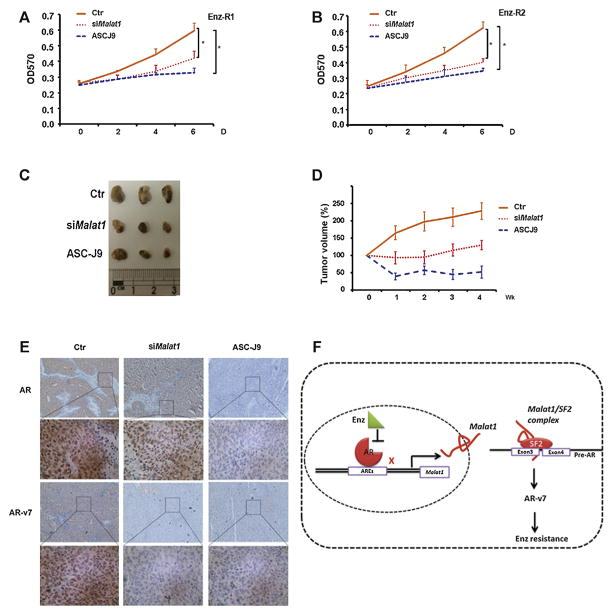Fig. 5.
The Malat1-small interfering RNA or anti-androgen receptor splicing variant 7 (AR-v7) with ASC-J9 suppresses enzalutamide-resistant (EnzR) cell lines in vitro and in vivo growth compared with a control (Ctr). (A) The Malat1-small interfering RNA and ASC-J9 (5 μM) suppresses cell growth of EnzR1 and (B) EnzR2 cell lines. (C, D) Mouse tumor volumes (C) were measured (1/2[short axis2 × long axis]) and plotted against the control volume of various treatments and days (D). Tumor dissection of EnzR injected mice with indicated therapies. Control small interfering RNA (n = 4), Malat1-small interfering RNA (n = 6), and ASC-J9 (n = 6) were injected in the periphery of tumors of mice. After 4 wk of weight monitoring, mice were sacrificed. Representative images (Rows 1 and 3 are 100× magnification and rows 2 and 4 are 400× magnification of the boxes in rows 1 and 3) of tumors after mice were sacrificed. (E) Immunohistochemistry staining to monitor AR-v7 and full length AR (AR) expression as indicated with above treatments. (F) A schematic depiction of molecular mechanism underlying Enz resistance development.
* p < 0.01.

